Plants

Miracle Berry (1-2 ft)
₱650

Miracle Berry (2-3 ft)
₱1700
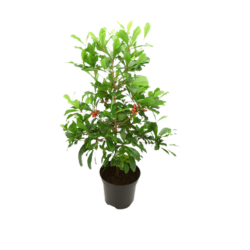
Miracle Berry (3-4 ft)
₱2000
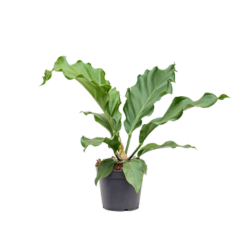
Anthurium Wave of Love
₱450
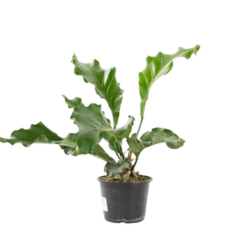
Anthurium Wave of Love (3 y/o)
₱500
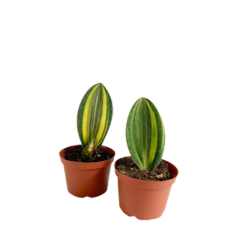
Sansevieria Whale Fin (small)
₱120

Sansevieria Whale Fin (medium)
₱150
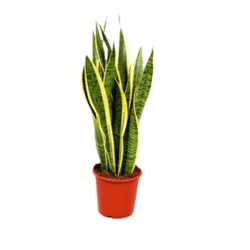
Sansevieria Whale Fin (large)
₱200

Dwarf Pink Anthurium
₱350~

Red Begonia
₱400

Dapo / Bird’s Nest
₱300~

Homalomena
₱350~

Miracle Berry (1-2 ft)
Miracle Berry, Synsepalum dulcificum, are the most notable feature of the plant, as they contain a protein called miraculin, which temporarily alters taste perception, making sour foods taste sweet.
₱650
Plantcare
- Watering: Keep soil consistently moist, allowing the top inch to dry between waterings.
- Light: Provide bright, indirect light; avoid direct sunlight.
- Temperature and Humidity: Maintain temperatures between 70°F to 85°F(21°C to 29°C), protecting from drafts.
- Soil: Use well-draining acidic soil (pH 5.5 – 6.5).
- Fertilizer: Feed with balanced, diluted fertilizer every 4-6 weeks during the growing season.
- Pruning: Trim after fruiting to maintain shape and promote bushiness.
- Propagation: Easily propagated from stem cuttings placed in a rooting medium.




Miracle Berry (2-3 ft)
Miracle Berry, Synsepalum dulcificum, are the most notable feature of the plant, as they contain a protein called miraculin, which temporarily alters taste perception, making sour foods taste sweet.
₱1700
Plantcare
- Watering: Keep soil consistently moist, allowing the top inch to dry between waterings.
- Light: Provide bright, indirect light; avoid direct sunlight.
- Temperature and Humidity: Maintain temperatures between 70°F to 85°F(21°C to 29°C), protecting from drafts.
- Soil: Use well-draining acidic soil (pH 5.5 – 6.5).
- Fertilizer: Feed with balanced, diluted fertilizer every 4-6 weeks during the growing season.
- Pruning: Trim after fruiting to maintain shape and promote bushiness.
- Propagation: Easily propagated from stem cuttings placed in a rooting medium.




Miracle Berry (3-4 ft)
Miracle Berry, Synsepalum dulcificum, are the most notable feature of the plant, as they contain a protein called miraculin, which temporarily alters taste perception, making sour foods taste sweet.
₱2000
Plantcare
- Watering: Keep soil consistently moist, allowing the top inch to dry between waterings.
- Light: Provide bright, indirect light; avoid direct sunlight.
- Temperature and Humidity: Maintain temperatures between 70°F to 85°F(21°C to 29°C), protecting from drafts.
- Soil: Use well-draining acidic soil (pH 5.5 – 6.5).
- Fertilizer: Feed with balanced, diluted fertilizer every 4-6 weeks during the growing season.
- Pruning: Trim after fruiting to maintain shape and promote bushiness.
- Propagation: Easily propagated from stem cuttings placed in a rooting medium.




Anthurium Wave of Love
Anthurium ‘Wave of Love’, Anthurium andraeanum, is a hybrid variety known for its heart-shaped, glossy leaves and vibrant, wavy blooms in shades of red, pink, or white.
₱450
Plantcare
- Watering: Keep soil consistently moist but not soggy.
- Light: Bright, indirect light.
- Temperature Maintain 65°F to 80°F (18°C to 27°C).
- Humidity: High humidity levels are preferred.
- Soil: Well-draining, organic-rich potting mix.
- Fertilizer: Apply diluted balanced fertilizer every 4-6 weeks during the growing season.
- Pruning: Remove dead leaves and flowers.
- Propagation: Can be propagated from stem cuttings or division.




Anthurium Wave of Love (3 y/o)
Anthurium ‘Wave of Love’, Anthurium andraeanum, is a hybrid variety known for its heart-shaped, glossy leaves and vibrant, wavy blooms in shades of red, pink, or white.
₱500
Plantcare
- Watering: Keep soil consistently moist but not soggy.
- Light: Bright, indirect light.
- Temperature Maintain 65°F to 80°F (18°C to 27°C).
- Humidity: High humidity levels are preferred.
- Soil: Well-draining, organic-rich potting mix.
- Fertilizer: Apply diluted balanced fertilizer every 4-6 weeks during the growing season.
- Pruning: Remove dead leaves and flowers.
- Propagation: Can be propagated from stem cuttings or division.




Sansevieria Whale Fin (small)
Sansevieria Whale Fin, Ansevieria masoniana, is a striking variety of snake plant characterized by its large, paddle-shaped leaves with unique whale fin-like appearance. Its foliage is a deep, rich green with lighter mottled
patterns.
₱120
Plantcare
- Watering: Allow soil to dry completely between waterings, avoiding overwatering.
- Light: Thrives in bright, indirect light or low light conditions.
- Temperature Prefers temperatures between 60°F to 80°F (15°C to 27°C), avoiding cold drafts.
- Humidity: Low to moderate humidity levels.
- Soil: Well-draining cactus or succulent mix.
- Fertilizer: Apply diluted balanced fertilizer every 4-6 weeks during the growing season.
- Pruning: Minimal pruning required; remove yellow or dead leaves as needed.
- Propagation: Propagate from leaf cuttings or division.




Sansevieria Whale Fin (medium)
Sansevieria Whale Fin, Ansevieria masoniana, is a striking variety of snake plant characterized by its large, paddle-shaped leaves with unique whale fin-like appearance. Its foliage is a deep, rich green with lighter mottled
patterns.
₱150
Plantcare
- Watering: Allow soil to dry completely between waterings, avoiding overwatering.
- Light: Thrives in bright, indirect light or low light conditions.
- Temperature Prefers temperatures between 60°F to 80°F (15°C to 27°C), avoiding cold drafts.
- Humidity: Low to moderate humidity levels.
- Soil: Well-draining cactus or succulent mix.
- Fertilizer: Apply diluted balanced fertilizer every 4-6 weeks during the growing season.
- Pruning: Minimal pruning required; remove yellow or dead leaves as needed.
- Propagation: Propagate from leaf cuttings or division.




Sansevieria Whale Fin (large)
Sansevieria Whale Fin, Ansevieria masoniana, is a striking variety of snake plant characterized by its large, paddle-shaped leaves with unique whale fin-like appearance. Its foliage is a deep, rich green with lighter mottled
patterns.
₱200
Plantcare
- Watering: Allow soil to dry completely between waterings, avoiding overwatering.
- Light: Thrives in bright, indirect light or low light conditions.
- Temperature Prefers temperatures between 60°F to 80°F (15°C to 27°C), avoiding cold drafts.
- Humidity: Low to moderate humidity levels.
- Soil: Well-draining cactus or succulent mix.
- Fertilizer: Apply diluted balanced fertilizer every 4-6 weeks during the growing season.
- Pruning: Minimal pruning required; remove yellow or dead leaves as needed.
- Propagation: Propagate from leaf cuttings or division.




Dwarf Pink Anthurium
Dwarf Pink Anthurium is a compact variety of Anthurium Andraeanum, featuring vibrant pink spathes and glossy green leaves. It is prized for its small size and charming blooms.
₱350~
Plantcare
- Watering: Keep soil evenly moist, allowing the top inch to dry between waterings.
- Light: Thrives in bright, indirect light; avoid direct sunlight.
- Temperature Maintain temperatures between 65°F to 80°F (18°C to 27°C).
- Humidity: Prefers high humidity levels; mist regularly or use a humidifier.
- Soil: Well-draining, porous potting mix rich in organic matter.
- Fertilizer: Feed with diluted balanced fertilizer every 4-6 weeks during the growing season.
- Pruning: Remove spent flowers and yellowing leaves to encourage new growth.
- Propagation: Propagate from stem cuttings placed in a rooting medium.




Red Begonia
Red Begonia, Begonia spp., are popular flowering plants known for their vibrant red blooms and attractive foliage. They come in various sizes and shapes, from compact bedding plants to larger, cascading varieties.
₱400
Plantcare
- Watering: Keep soil consistently moist; allow the top inch to dry between waterings.
- Light: Bright, indirect light.
- Temperature Maintain 65°F to 75°F (18°C to 24°C).
- Humidity: Moderate to high humidity.
- Soil: Well-draining, rich potting mix.
- Fertilizer: Apply balanced liquid fertilizer every 4-6 weeks.
- Pruning: Pinch back leggy growth and remove spent flowers.
- Propagation: Propagate from stem or leaf cuttings.




Dapo / Bird’s Nest
Bird’s Nest Fern, Asplenium nidus, are tropical ferns characterized by their attractive, glossy fronds that grow in a nest-like formation, giving them their common name. They have wide, arching leaves with a vibrant green
color and a slightly wavy texture, resembling a bird’s nest.
₱300~
Plantcare
- Watering: Keep soil consistently moist, avoiding waterlogging.
- Light: Prefers bright, indirect light.
- Temperature Maintain 60°F to 80°F (15°C to 27°C).
- Humidity: Requires high humidity; mist regularly.
- Soil: Well-draining, organic-rich potting mix.
- Fertilizer: Apply diluted balanced fertilizer every 4-6 weeks.
- Pruning: Trim dead fronds as needed.
- Propagation: Divide the plant at the rhizome for propagation.




Homalomena
Homalomena, Homalomena spp., is a genus of tropical plants known for their lush foliage and colorful leaves. They come in various species and cultivars, often featuring glossy, heart-shaped leaves with unique patterns
and colors.
₱350~
Plantcare
- Watering: Keep soil consistently moist, avoiding waterlogging.
- Light: Prefers bright, indirect light.
- Temperature Maintain 65°F to 80°F (18°C to 27°C).
- Humidity: Thrives in high humidity; mist leaves regularly.
- Soil: Well-draining, peat-based mix.
- Fertilizer: Apply diluted balanced fertilizer every 4-6 weeks.
- Pruning: Remove dead or yellowing leaves.
- Propagation: Propagate from stem cuttings or division.




